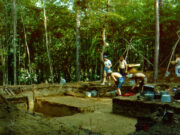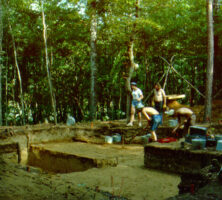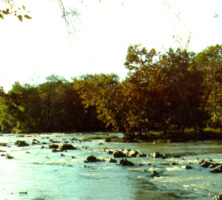The Cane Island archaeological site is one of Georgia’s earliest Native American farming villages. It now lies beneath Lake Oconee in Greene County, between Greensboro and Eatonton. In 1978 and 1979 the University of Georgia’s Department of Anthropology excavated portions of the site before it was flooded by the Georgia Power Company. The team found that Native Americans had lived along this portion of the Oconee River for at least 10,000 years. During what archaeologists call the Middle Woodland subperiod (ca. 300 B.C.–A.D. 600), the island was home to a small village of Native Americans whose economy relied primarily upon hunting, fishing, and gathering. One of the most important findings to come out of the excavations was evidence of early plant domestication from one of the village households. Archaeologists recovered fragments of charred corn and squash as well as microscopic grains of corn pollen. Two stone hoes probably used to tend crops were also found at the same household. This Middle Woodland farming community was radiocarbon-dated to about A.D. 245, making it one of the earliest such sites in Georgia.
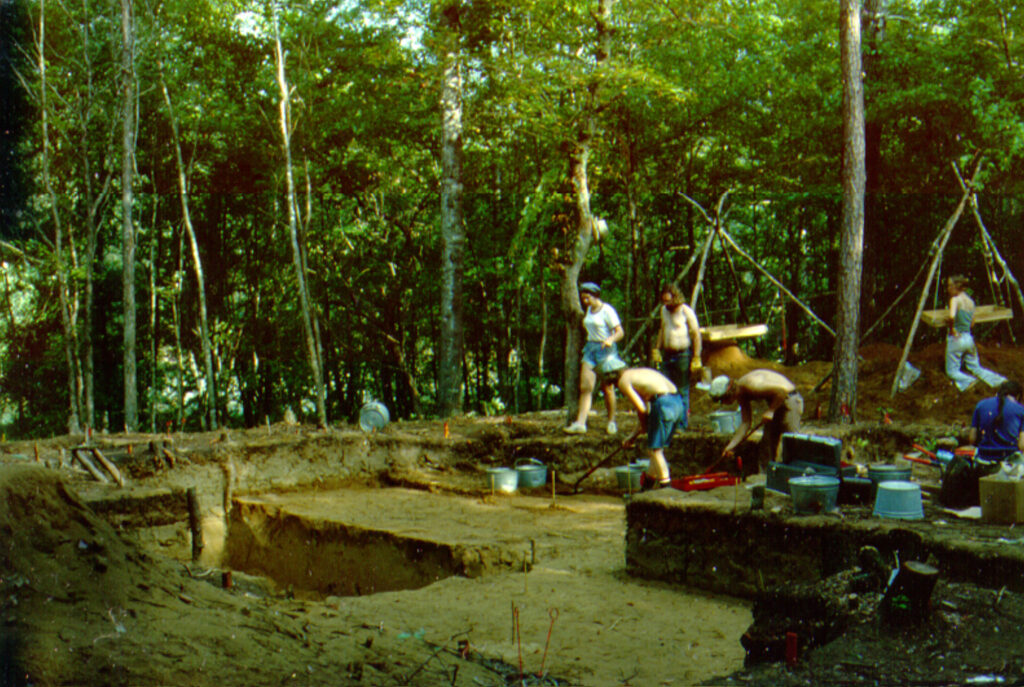
Courtesy of W. Dean Wood
Identification and analysis of other charred plant fragments and preserved pollen grains showed that the Middle Woodland residents of Cane Island exploited a multitude of wild plants growing within a short distance of their village. The Cane Island site was located along a portion of the Oconee River called Long Shoals, where the river crossed extensive granite outcrops that created shallow rapids and an excellent fish habitat. The floodplain of the river, while limited in size, provided excellent agricultural soils that were sandy, easy to till, and rich in nutrients. The adjacent hillsides were covered with a mixed hardwood forest that yielded edible nut crops like hickory, walnut, and acorn. The wetlands along the river and its tributaries produced seasonally abundant plants for food and other needs. Although the villagers on Cane Island were growing domesticated crops, they are believed to have relied mostly upon the wild plants and animals around Long Shoals to supply their needs.
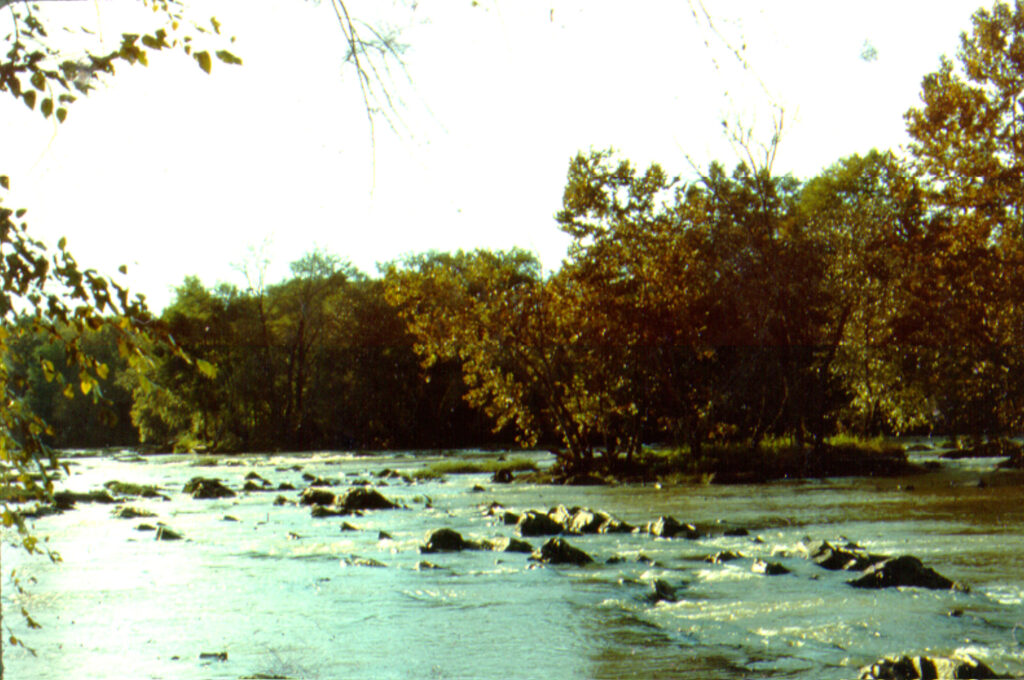
Courtesy of W. Dean Wood


